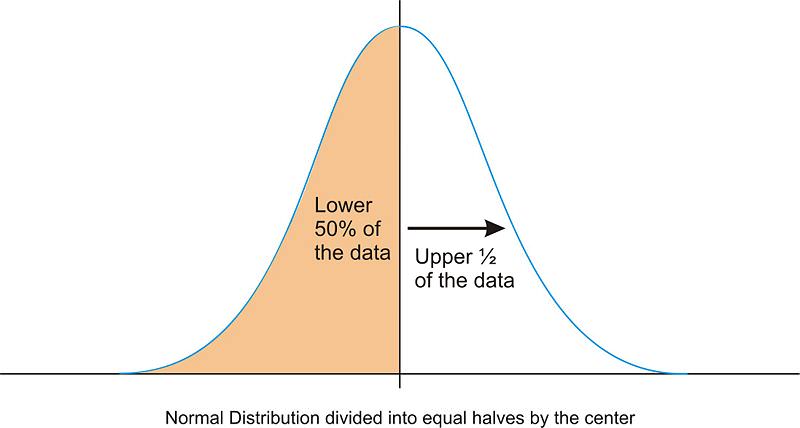LESSON: The Normal Distribution
Characteristics of Normal Distribution
Shape
When graphing the data from each of the examples in the introduction, the distributions from each of these situations would be mound-shaped and mostly symmetric. A normal distribution is a perfectly symmetric, mound-shaped distribution. It is commonly referred to the as a normal curve, or bell curve.
Because so many real data sets closely approximate a normal distribution, we can use the idealized normal curve to learn a great deal about such data. With a practical data collection, the distribution will never be exactly symmetric, so just like situations involving probability, a true normal distribution only results from an infinite collection of data. Also, it is important to note that the normal distribution describes a continuous random variable.
Center
Due to the exact symmetry of a normal curve, the center of a normal distribution, or a data set that approximates a normal distribution, is located at the highest point of the distribution, and all the statistical measures of center we have already studied (the mean, median, and mode) are equal.
It is also important to realize that this center peak divides the data into two equal parts.

Spread
Let’s go back to our popcorn example. The bag advertises a certain time, beyond which you risk burning the popcorn. From experience, the manufacturers know when most of the popcorn will stop popping, but there is still a chance that there are those rare kernels that will require more (or less) time to pop than the time advertised by the manufacturer. The directions usually tell you to stop when the time between popping is a few seconds, but aren’t you tempted to keep going so you don’t end up with a bag full of un-popped kernels? Because this is a real, and not theoretical, situation, there will be a time when the popcorn will stop popping and start burning, but there is always a chance, no matter how small, that one more kernel will pop if you keep the microwave going. In an idealized normal distribution of a continuous random variable, the distribution continues infinitely in both directions.
Because of this infinite spread, the range would not be a useful statistical measure of spread. The most common way to measure the spread of a normal distribution is with the standard deviation, or the typical distance away from the mean. Because of the symmetry of a normal distribution, the standard deviation indicates how far away from the maximum peak the data will be. Here are two normal distributions with the same center (mean):
The first distribution pictured above has a smaller standard deviation, and so more of the data are heavily concentrated around the mean than in the second distribution. Also, in the first distribution, there are fewer data values at the extremes than in the second distribution. Because the second distribution has a larger standard deviation, the data are spread farther from the mean value, with more of the data appearing in the tails.





